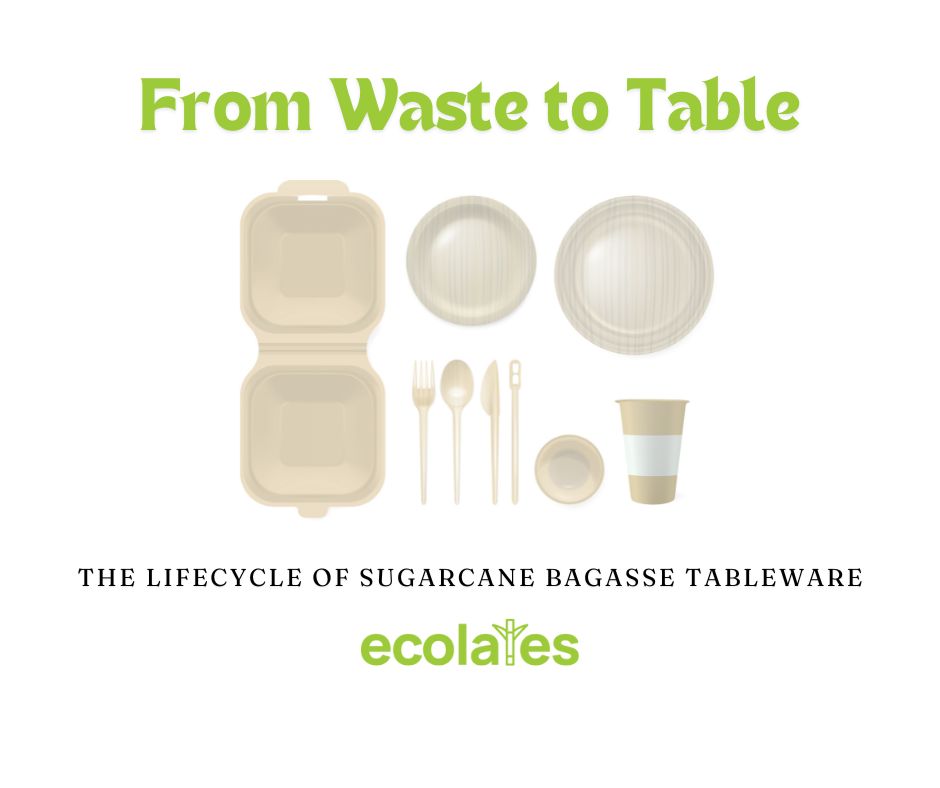In an era where sustainability is more than a trend but a necessity, Sugarcane Bagasse Tableware stands out as a remarkable innovation. But how does this transformation from agricultural waste to your eco-friendly table take place? Let’s delve into the fascinating lifecycle of sugarcane bagasse and discover how it plays a pivotal role in shaping a greener future.
1. The Origin: Sugarcane Fields and Harvesting
The journey of sugarcane bagasse tableware begins in lush sugarcane fields. Sugarcane, a versatile crop, is primarily cultivated for its sweet juice, which is processed into sugar and other products. After the juice extraction, what remains is a fibrous residue known as bagasse. Traditionally considered a by-product, bagasse was often burned or discarded. However, its high fiber content and biodegradability have paved the way for its innovative use in manufacturing eco-friendly tableware.
2. The Transformation: From Fibers to Pulp
The next step in the lifecycle is the transformation of raw bagasse into usable material. The fibrous residue undergoes a cleaning and pulping process to break down the fibers. This involves soaking the bagasse in water to soften it, followed by mechanical pulping where it is ground into a fine, homogeneous pulp. This pulp is then washed and bleached, preparing it for the next stage of production.
3. The Crafting: Molding and Shaping
Once the pulp is ready, it is molded into various shapes and forms to create the final tableware products. The pulp is poured into molds and subjected to high pressure and temperature, which solidifies it into sturdy plates, bowls, cups, and containers. This process not only ensures the durability of the products but also imbues them with a smooth finish and attractive appearance, making them a viable alternative to conventional disposable tableware.
4. The Benefits: Sturdy and Sustainable
Sugarcane bagasse tableware offers several advantages over traditional plastic or Styrofoam disposables. Firstly, it is biodegradable and compostable, breaking down naturally without leaving harmful residues. Secondly, these products are sturdy and can withstand hot and cold foods, making them ideal for a variety of dining experiences. Additionally, they are microwave-safe and resistant to oil and water, providing practicality alongside environmental benefits.
5. The End of Life: Composting and Recycling
After serving their purpose, sugarcane bagasse tableware can be returned to the earth through composting. Unlike plastic, which can take centuries to decompose, bagasse tableware decomposes within a few months under composting conditions. This not only reduces waste but also enriches the soil with valuable nutrients. For consumers without composting facilities, many municipal waste systems now accept compostable materials, facilitating their proper disposal.
6. The Broader Impact: Reducing Waste and Carbon Footprint
The use of sugarcane bagasse tableware extends beyond individual benefits to a larger environmental impact. By repurposing agricultural waste, we reduce reliance on fossil fuels and minimize greenhouse gas emissions associated with plastic production and disposal. Moreover, it supports the agricultural economy by creating additional revenue streams for sugarcane growers and processors.
Conclusion: A Greener Dining Solution
The lifecycle of sugarcane bagasse tableware, from waste to table, exemplifies a sustainable approach to addressing the growing concerns over disposable tableware. By choosing these eco-friendly products, we not only reduce our environmental footprint but also contribute to a circular economy that values resource efficiency and waste minimization.
In embracing sugarcane bagasse tableware, consumers and businesses alike can enjoy high-quality dining experiences while actively participating in the global movement towards sustainability. So, next time you reach for a plate or bowl, consider the journey it took to get there and the positive impact you can make by choosing products that are as kind to the earth as they are practical for everyday use.





Comments